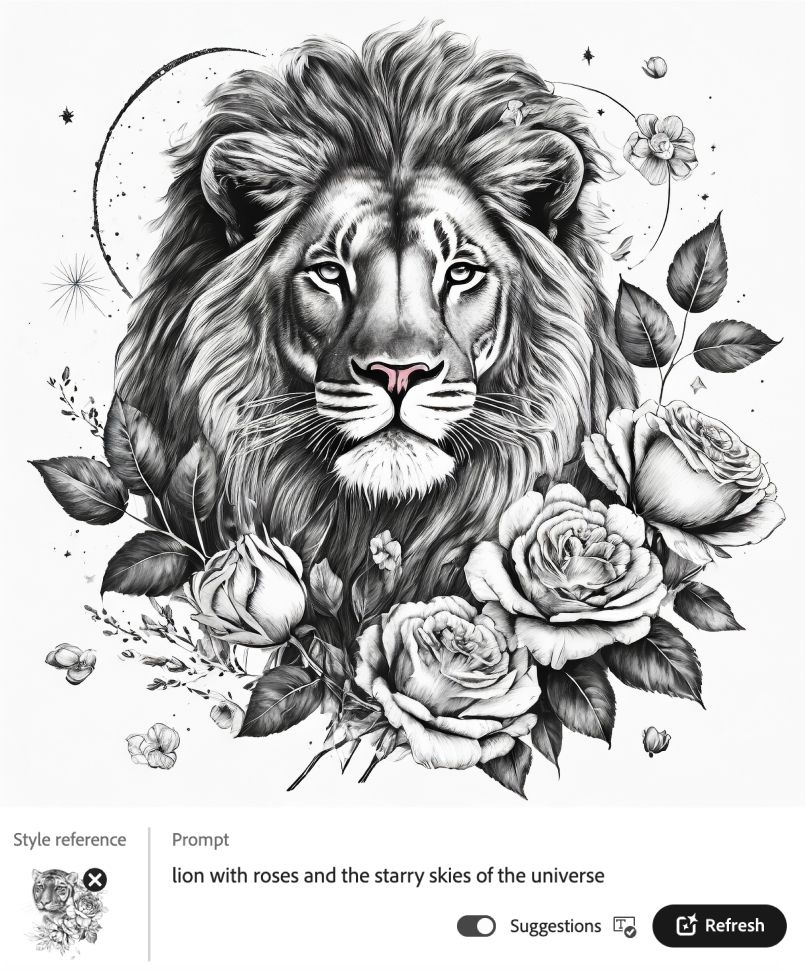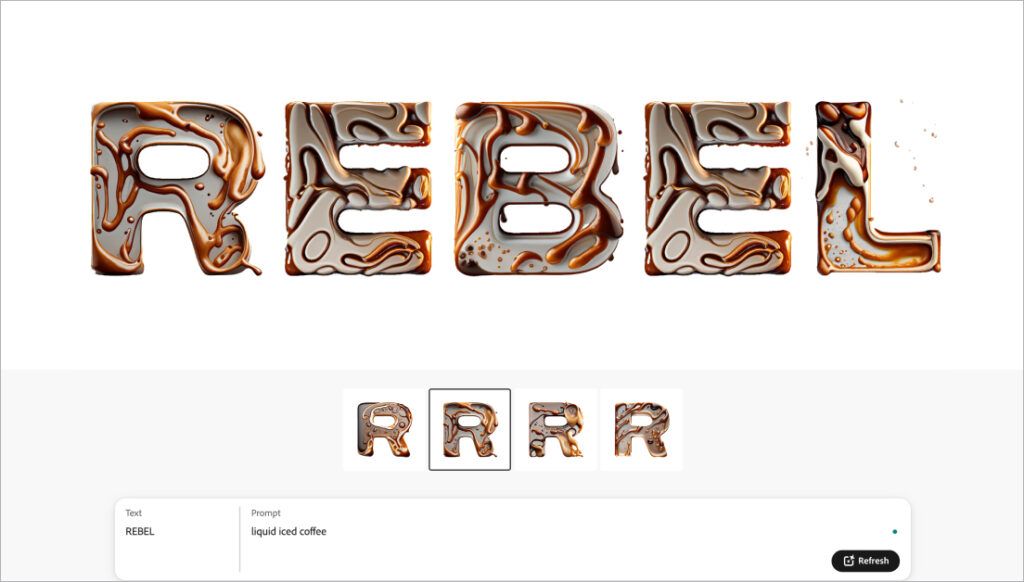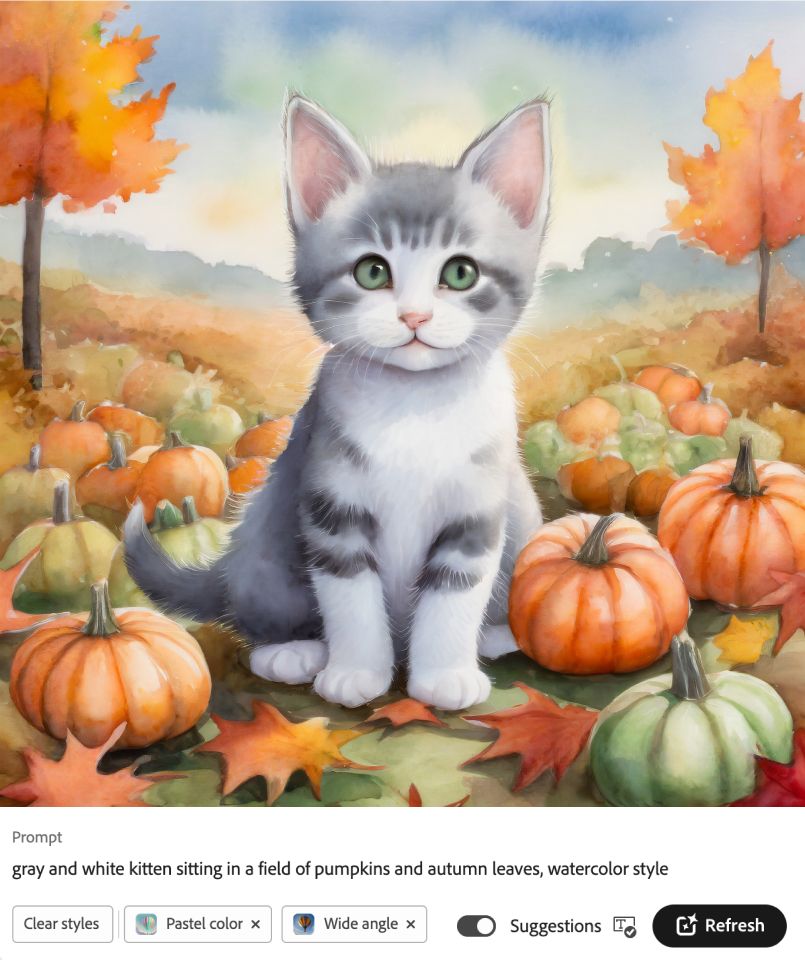AI (Artificial Intelligence) has become a defining force, driving innovation across an array of industries, including healthcare, retail, education, and more. Its potential to increase productivity and capacity in the world of digital marketing has been no less impactful. In terms of ideation and design development, AI-powered tools have helped free up creativity by accelerating concepting, which has streamlined the entire process.
To help put AI’s possible growth in perspective, according to Essential AI In Art Statistics In 2023, “the media and entertainment sector is projected to witness a whopping 36.2% CAGR (Compound Annual Growth Rate) of AI from 2020 to 2025, a testament to AI’s burgeoning influence in this realm … Artificial Intelligence and Machine Learning in the arts and culture sector are projected to reach $750 million in market revenue by 2026.”
How AI Is Advancing Art and Design
Working at a digital marketing agency means that several forms of AI have already become part of our workflows, helping us — and our clients — automate routines and time-consuming tasks so that we can spend time on what matters: creating. Tools like ChatGPT, Grammarly, and Google Analytics, for example, are already helping us cut through the noise to make our content development more efficient.
On the design side, AI can help us get out of ruts, find new inspiration, and take our work to the next level. In fact, a good AI tool can act as a collaborative influence, helping push creative limits and expand perspectives.
AI Resources for Design: Adobe’s Firefly Leads the Way
Certainly, we’re fortunate to be able to choose from many creative AI tools: Midjourney, Canva, and DALL-E2, just to name a few. Right now, in my opinion, Adobe is the clear winner when it comes to AI for creatives. In 2023, they debuted Firefly, a web application that allows users to generate images and other assets using text prompts. Its generative AI model, trained to pull from a dataset of licensed content, such as Adobe Stock and public domain content where copyright has expired, has been huge for the creative industry. Prior to its release, there had been a great deal of controversy regarding the ethics of using AI as an artist or designer. Adobe brought instant credibility to the table.
Here are some examples of Firefly’s AI tools in use:



Since the launch of Firefly, Adobe has also launched generative AI tools for Photoshop and Illustrator.
To offer a broader view of the AI in design debate, I asked some of my colleagues for their thoughts:
Pro of AI in Design: Making Editing Easier
“Photoshop’s generative abilities have definitely helped with editing tasks that involve extending backgrounds, filling in awkward spaces, and not having to cut and clone meticulously. Illustrator’s recolor beta has also been amazing for quickly figuring out different color schemes for vector artwork without having to search for the color palettes yourself. These tools make work quicker and more efficient, but not perfect. I still have to go in and finesse the finer details.”
— Veronika Zhikhareva, Senior Graphic Designer
To Veronika’s point, Adobe’s Photoshop Beta and generative AI tools have been a blessing for many of us creatives.
New features allow us to:
- Generate concepts
- See our ideas quickly come to life
- Remove and replace content and objects
- Expand photos in any direction
- Recolor photos
- Generate new backgrounds
- Refine selections
- Match fonts
- Mask and blend objects seamlessly and more
Here are some fun examples of Photoshop’s Generative AI tools in use:
Common Misconceptions About AI and Creative Work
“People think AI can generate anything, like a logo or branded elements. As a designer, it bothers me because it creates a false analogy that design is quick — but good design will always take time. Companies and employees should be informed that AI is a tool and not a replacement for designers. Questions like ‘Can we generate this in AI?” aren’t that easy to answer. It can be done, but the process still requires guidance and it’s still iterative, meaning that it’s not always quick and easy to accomplish.”
— Kevin Skrocki, Graphic Designer
According to Chai Jeffery, author of The Impact of AI on Design: A Personal Perspective, “Clients want results fast, and they’re okay with ‘good enough’ rather than top-notch quality. It’s like asking them if they prefer the scenic route with a designer who takes time to understand their needs, delivers a slower turnaround, and goes through multiple revisions, or the speedy route that gets the job done. Spoiler alert: Most will choose the latter.”
The key takeaway? Even though AI represents the opportunity to streamline and speed processes, obtaining the quality we want to provide still takes time.
A Risk of AI In Design: Will AI Replace Our Jobs?
“These tools have proven to be useful if utilized properly. If you’re looking for AI tools to do all the work and have it ready for delivery, you’ll be mistaken. It’s a great first step to get the point across but AI can’t provide the attention to detail — or the direction — a human can. It definitely helps speed up the process, but again, it’s only as good as who’s driving it. Overall, these tools should be treated as our support system.”
— Corey Hutchison, Creative Director
“AI helps us get to the finish line faster, leaving more time for the human stuff, like ideation and strategy. However, I do think it can become a crutch and soften a designer’s talents if they rely too heavily on it to do all the work. I don’t think AI will take our jobs — it’s the talented designers using AI intelligently who will rise to the top.”
— Justin Girard, Creative Director
We Create the Magic
What the perspectives of our Rebel creatives tell us is that AI most definitely has a place in the design process. And, as a creative agency, we’re looking forward to seeing how AI evolves within Adobe platforms and the field of art and design. But it’s our emotional connection, personal touch, and involvement in developing creative deliverables that add a certain magic that AI simply cannot replicate.